The Trails franchise is one of my favorite RPG franchises, but it's always been difficult to recommend an exact game to start the journey. The logical starting point, the Trails in the Sky trilogy, is dated enough that it could be difficult for those who started with Trails of Cold Steel or Trails through Daybreak to get into, but not starting there means you lose out on a lot of references and the interconnected nature of the world. That's why Trails in the Sky 1st Chapter is such a welcome remake. It takes everything that was great about the original game and polishes and modernizes it enough that it now fits cleanly into the rest of the series. It means there's no better place to start your Zemurian adventure than with this title.
Trails in the Sky 1st Chapter returns players to the small country of Liberl in the Zemurian continent. Liberl is recovering from a recent attempted invasion by the Erobonian Empire that was thwarted by the actions of the great hero, Cassius Bright. These days, Cassius has retired from the world-saving business to work as a bracer, sort of a catch-all adventurer and hero for hire. His daughter Estelle and adopted son Joshua seek to follow in his footsteps, but shortly after they enter the bracer guild, Cassius and his airship go missing. Together, the duo ventures into Liberl to prove themselves to the bracer guilds of the land and figure out what happened to their dad.
Trails in the Sky 1st Chapter is the definition of a slow-burn game. The bulk of the experience isn't a race against time for the fate of the world; it's Estelle and Joshua's trip across Liberl seeking to become fully fledged bracers. While there is excitement and drama to be had in battling evil monsters, just as much time is spent helping random people on the street or learning more about the complex political situations of the land. The centerpiece is the slowly developing relationship between Estelle and Joshua.
I consider the relationship to be a pure strength instead of a negative. This isa relaxing and enjoyable RPG that spends a lot of its time and energy building up to the future games in the series, and it works well for that. In a time when future games were inaccessible, it could've been more of a negative, but the game ends with a trailer for a remake of the next game. The original version is still available, so there's no sense of frustration in the slow pacing of the game.
It helps that Estelle is one of the best protagonists in the franchise. A good-natured if sometimes dumb-as-a-brick dork, she lends a sense of motivation and energy to the franchise that the later protagonists never quite managed to capture. Overall, the cast of 1st Chapter is a lot of fun, and it's no surprise that all of them end up coming back in future games. The revisited 1st Chapter contains some new dialogue and backstory for characters, but it isn't a huge shift. Some of the NPCs still feel a bit basic but not enough to detract from the experience.
My only real complaint about the game's plot is a translation issue, which is that a lot of terminology used in 1st Chapter isn't consistent with previous translations of the game or later games in the series. It's a relatively minor complaint, since the translation feels quite solid, but it's probably the only real barrier in going from 1st Chapter to other games in the series. I wish more care had been taken to ensure everything lined up.
Trails in the Sky 1st Chapter adopts the modified combat system from Trails through Daybreak and its sequels. This means that it's a combination action/turn-based hybrid. When exploring the game's environments, you can hop into combat to battle enemies in straightforward action-RPG combat. You can attack, dodge, or spend a charge meter to perform powerful special attacks, such as Estelle being able to swing her staff in a circle to hit multiple foes at once. This does solid damage to weaker foes, but for stronger or particularly evasive foes, you need to enter a turn-based mode, which can be done at the touch of a button.
In comparison, turn-based mode will feel very familiar to fans of the franchise, and it contains all the series staples. You have access to regular attacks, character-specific Craft attacks, and customizable magic Art attacks, and each requires you to spend different resources to use them. Craft attacks tend to be special buffs or character attacks, including power S-Crafts that use up your Craft Points(CP), but they can be used at any time. Art attacks are more like traditional JRPG magic spells. You also have access to Brave attacks, which function much like the chain attacks in recent Trails games, allowing you to follow up a critical hit or elemental weakness with another attack.
Arts in 1st Chapter are different from recent games. Each character has an Orbment, which is a magical pocket watch where you insert crystals called Quartzes. Unlike recent games, these Quartzes are almost all passive benefits, such as improved stats or the ability to heal automatically after battle. Each Quartz has one or more elements associated with it. Certain elements can only be equipped in certain Orbment slots, so each character has a distinct potential build, but the specific amount of each element you have determines the spells that you can access. If you want higher-end Fire spells, you'll need powerful Red quartz in addition to other elemental Quartzes. This makes it complex to build the optimal builds for your characters, since you have to balance passive benefits with the elemental benefits of a specific Quartz.
Each character also now has access to an Overdrive, a powered-up mode that boosts all of your characters' combat abilities while also granting character-specific bonuses, such as Joshua gaining a huge boost to his speed stats. This also assures that all attacks trigger a Brave attack. You can enter Overdrive after fighting long enough, but it only lasts for a few turns. Enemy bosses have a similar powered-up state, where they gain a red Aura, so this particular sword is double-edged.
A major element in the game is the timeline. Every action in the game appears on a timeline in the corner, and certain abilities and attacks can manipulate the timeline. Randomly appearing on the timeline are bonuses, such as an assured critical hit, free instant spell casts, extra items, and more. In previous Trails games, this tended to be easy to manipulate by using an S-Craft to get a bonus or prevent a boss from getting one. However, S-Crafts no longer instantly steal the enemy's bonus, so it's far more useful to utilize abilities and attacks that manipulate the timeline. This also means that Craft attacks have a distinct purpose to delay enemies, so they're perfect to manipulate the timeline while Art attacks tend to deal raw damage.
The result is that Trails in the Sky 1st Chapter is genuinely the best-balanced game in the franchise. Almost all the rough edges from Daybreak have been smoothed out. S-Crafts, while strong, are no longer the only solution to every problem, and enemies have enough variety in design and builds that using different abilities and attacks is important. The boss battles are surprisingly intense and can make significant demands from the player, and the smaller party size means that each character can fill a more distinct niche. It isn't perfect, and as the game progresses, you can find some truly overpowered strategies, but it is more rewarding to figure out strong builds when the enemies hit hard enough to justify it.
Moving around the world is a lot easier as well, with a massive number of quality-of-life features backported from future games. This includes things like fast travel, the ability to dash quickly around the maps, and the achievement-like "reward" system that gives you bonus items for certain objectives. The all-important Speed Up function has been improved with the multiple in-and-out-of-battle options found in later games. Most of this is a huge improvement and makes the game a lot more fun to play.
One of the biggest benefits in the game is that optional side content and markers are now clearly listed on the map. If you've played the original game, you would know that there are a ton of side-quests and rare items that can be easily missed, so the game almost demands a walkthrough guide. It's now much easier to recognize these hidden items and just play the game without feeling like you're missing important items or vital plot points. It might annoy people who liked the sense of exploration, but making things clearer for casual players far outweighs the loss of the sense of discovery.
Trails in the Sky 1st Chapter is easily the most impressive-looking Trails game to date. While it still has relatively basic models, the environments, shading and cut scene direction have all seen a massive step upward compared to the previous titles in the series. There's a lot of care and effort put into capturing the feel of the original game in 3D. It still has signs of being a relatively low-budget game, but the improvements are so notable and significant that I'm excited to see what the next game in the franchise looks like. As always, the music is quite excellent. Trails in the Sky had a solid soundtrack, and the remake captures it perfectly. The voice acting is quite good, with the dub actors doing a good job conveying their role. Estelle took a little getting used to, but once I did, I found that she absolutely carried the game.
Trails in the Sky 1st Chapter is the gold standard for a remake of a good game. It expands and improves upon the original without losing any of the charm that made the original game shine. Its flaws are more with the original work than anything the remake did incorrectly. In terms of basic gameplay, it's probably the most enjoyable and well-designed Trails game to date. It also marks the perfect entry point to the Trails franchise, and there's no better way to figure out if this series is for you.
Score: 9.0/10
More articles about Trails In The Sky 1st Chapter


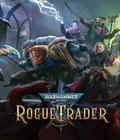
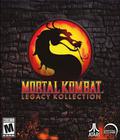
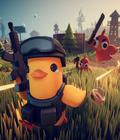

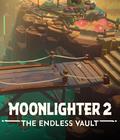
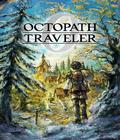
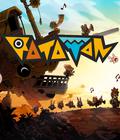
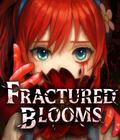

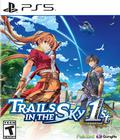 Trails In The Sky 1st Chapter reimagines the first chapter of a beloved JRPG series for modern platforms, infusing it with enhanced visuals and refined gameplay.
Trails In The Sky 1st Chapter reimagines the first chapter of a beloved JRPG series for modern platforms, infusing it with enhanced visuals and refined gameplay.




























